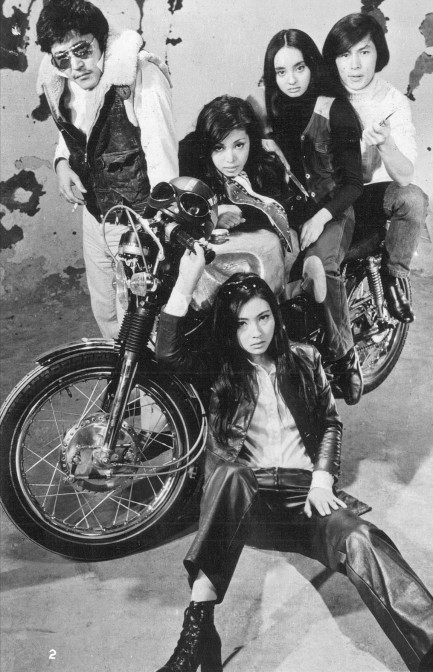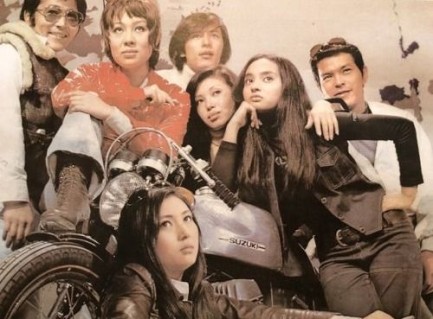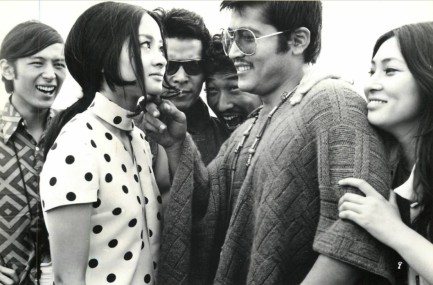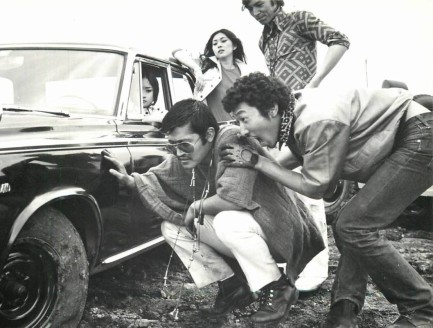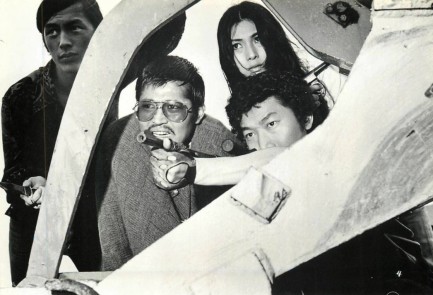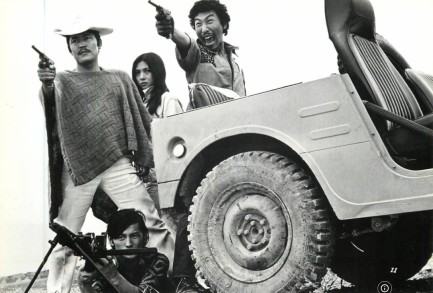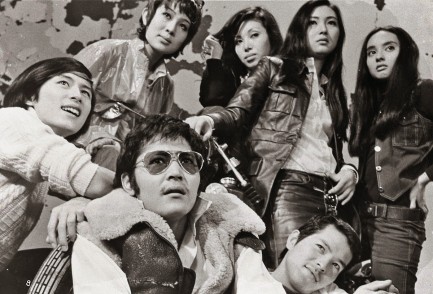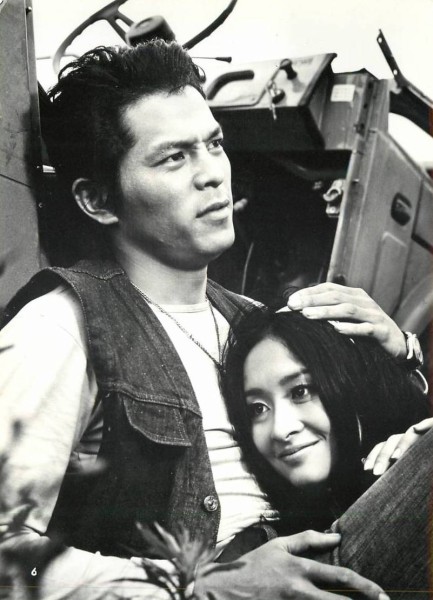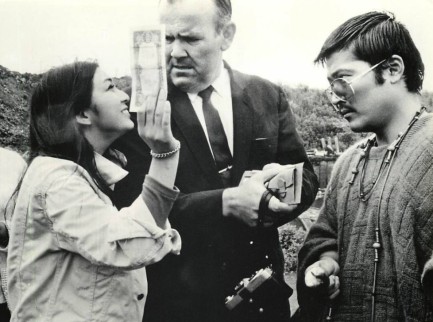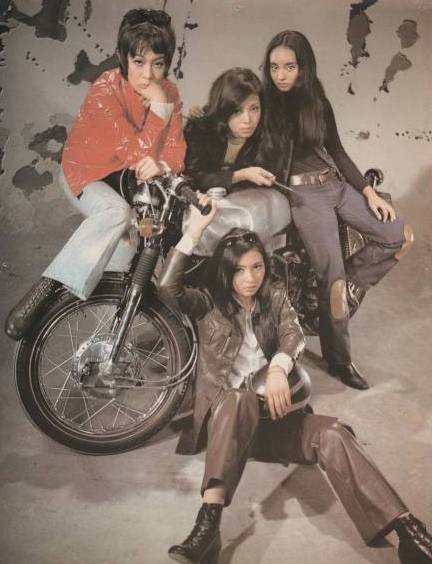 Nice for the camera but very hard on the circulation. 
Every time Miki Sugimoto stars in a promo photo we can barely believe our eyes. Here the cult action actress is squeezing her frame—or part of it anyway—into a tight space to get this wonderful shot. Wonderful for who? Certainly not her. She played some difficult roles, but this may have been her hardest. By the time she finished riding the rails for this image we bet she felt like her bottom was full of novocaine. Sometimes, though, you have to go above and beyond in the pursuit of art. Click her keywords below to see amazing promo shots and movie posters.
 Oshida makes her mark and it looks like a swastika. 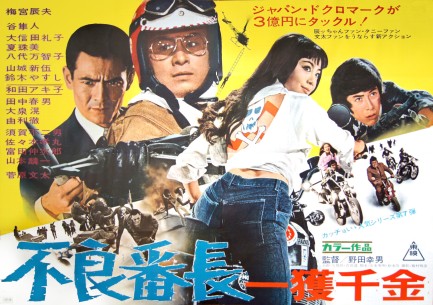
Above is a bo-ekibari style poster for the pinky violence actioner Furyô banchô: Ikkaku senkin, aka Wolves of the City: Fast Money. This piece is cousin to the standard sheet for the film we shared a couple of years ago. Just as when we showed you that one we haven't located the movie yet, but we'll keep working on it, if only to find out why star Reiko Oshida has a swastika on her back. We're guessing she's in a motorcycle gang, and it's their emblem. Furyô banchô: Ikkaku senkin premiered today in 1970. You can see the other poster here, and that entry also discusses briefly the swastika symbol in Japanese culture.
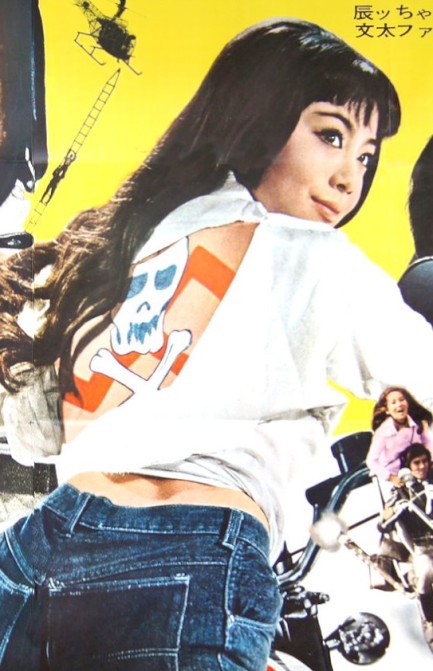
 All you need is one part Reiko and you'll be completely intoxicated. 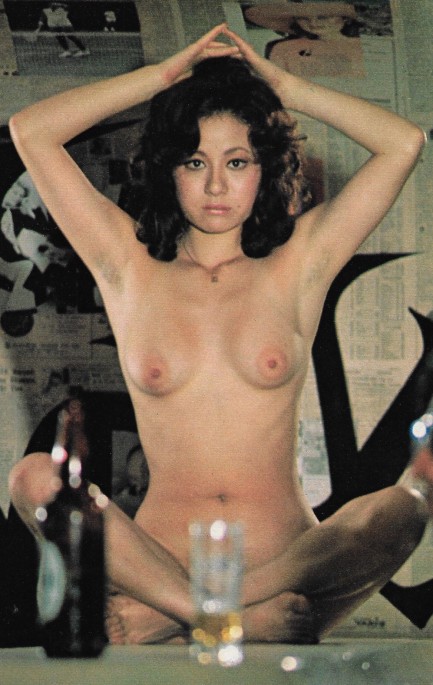
Above is another look at Reiko Ike perched on a Kyoto bartop from a 1972 promo series that appeared in the Japanese magazine Heibon Punch. As we mentioned, the location was used in her action movie Sukeban gerira. We'll try to get around to posting more shots from the series at some point. In the meantime, you can see the previous photo here.
 She's a woman completely without restraint. 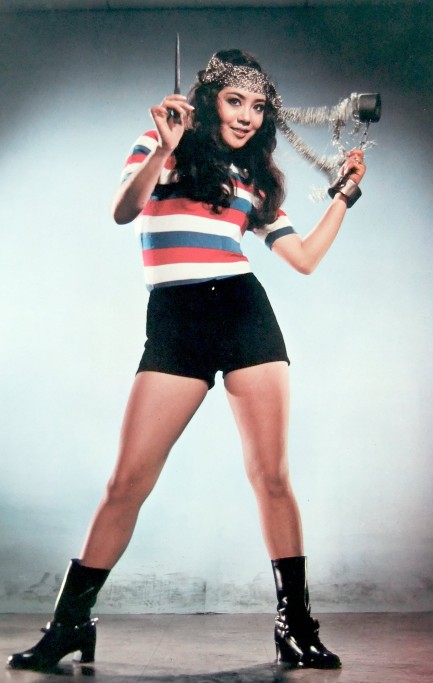
We bet you didn't notice that Japanese actress Reiko Oshida is swinging handcuffs in a circle. We understand. You'd tend to notice other elements of the photo first, like the knife, the boots, the shorts, or the stripes. This promo image was made for her 1971 pinky violence actioner Delinquent Girl Boss: Worthless To Confess, which was originally titled Zubekô banchô: zange no neuchi mo nai. A similar pose was used on the movie's poster, which you can see here. And if you're very interested, you can see alternate posters here and here, and Oshida with her crew of sword maniacs here. She shall return.
 Three times the danger, three times the fun. 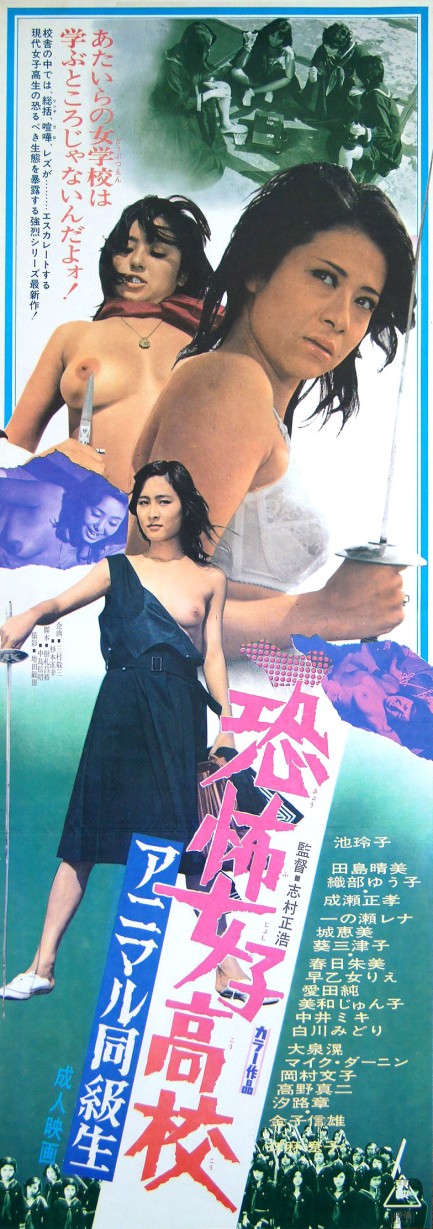
We talked about Reiko Ike's 1974 pinky violence flick Kyôfu joshi kôkô: Animal dôkyôsei—known in English as Terrifying Girls High School: Animal Courage—a long while ago, but we wanted to highlight this rare promo in tateken format. You can see the original poster and learn a bit about the film here.
 What's a girl have to do to get service in this joint? 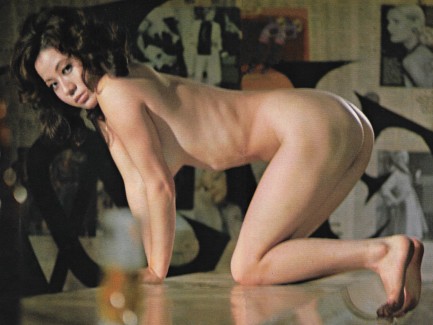
In this photo from a 1972 issue of Heibon Punch we see cinema star Reiko Ike, who decided to hit the Kyoto nightlife scene, but after terribly slow service was forced to take matters into her own hands and hop across the bar in an effort to get a mai-tai. In the bartender's defense, he didn't ignore Reiko intentionally. He fainted when she came in the door. This is (or was) a real world Kyoto bar that appeared in the pinky violence flick Sukeban gerira, aka Girl Boss Guerrilla, which Reiko had a major role in. The photo isn't an official promo from the film. At least, the magazine text doesn't mention it. But we recognized the place. In any case, Reiko got her mai-tai. Until the bartender regains consciousness drinks are on the house, and she's the toast of the town.
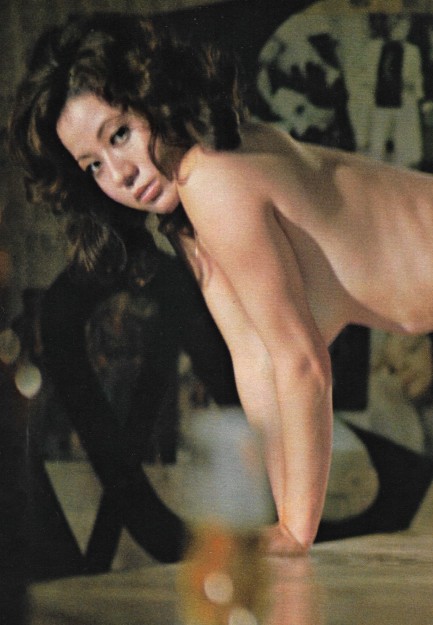 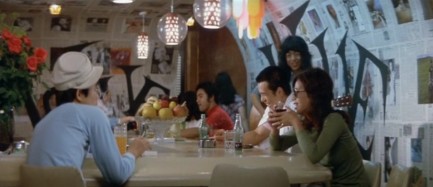
 Oshida and her friends run riot in the capital. 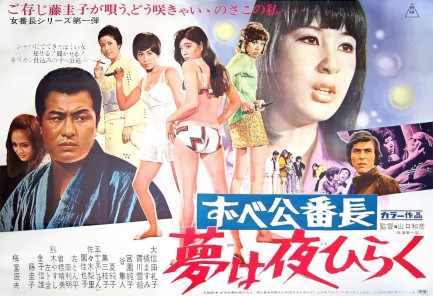 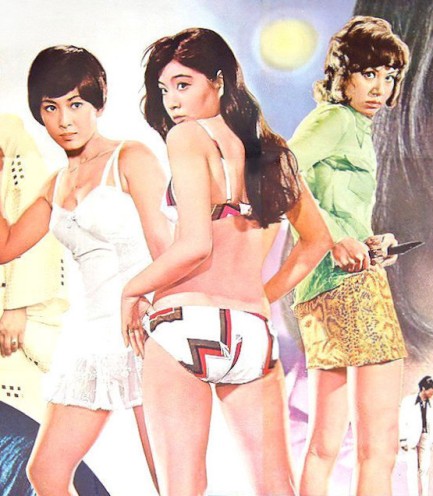
We're sticking with Japanese posters today. Here's one for the 1970 pinky violence flick Zubekô banchô: yume wa yoru hiraku, aka Tokyo Bad Girls, aka Delinquent Girl Boss: Blossoming Night Dreams. We showed you two other promos for this film, which were the standard and always fun tateken sizes. This is a rare bo-ekibari.
 Zero to crazy in under ninety minutes. 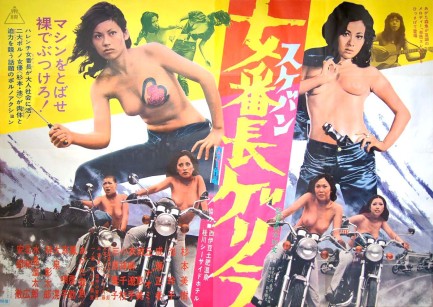
We first shared a poster for the pinky violence movie Sukeban gerira, aka Girl Boss Guerrilla, years ago and said at that time we'd get around to talking about the movie. We subsequently shared a tateken style poster, but still didn't get around to the film itself. Well, it's finally later. Eleven years later, to be exact. We refreshed our memory with a new screening last night, and to accompany today's thoughts we're sharing a rare bo-ekibari style poster of this classic pinky violence actioner from Toei Company.
Miki Sugimoto and three friends, who comprise the small but spirited Red Helmet Motorcycle Gang, take a trip from Tokyo to Kyoto to see if they can hustle up some yen by whatever means they can manage—grifts, graft, blackmail, whatever. They make some cash but quickly run afoul of Ryôko Ema of the Kyogoku Group, head boss of all Kyoto's girl gangs, which leads to a Ryôko-Miki showdown for control of the city. Our advice: never fight in flip-flops. But then again, we're not as tough as Miki. She loses her flip flops, but wins the fight.
There's always a set of bad men in the background of a pinky violence movie, and it turns out that though Kyoto's girl gangsters are now under Miki's hard won control, all operate under the umbrella of the Tsutsui Gang, who are basically the Kyoto branch of the yakuza. Miki has to give regular tribute to the boys, obey the rules, or pay the price. She's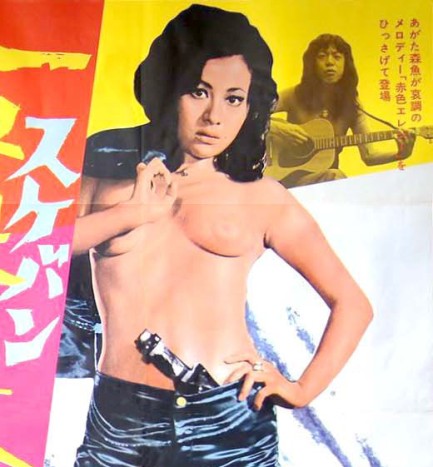 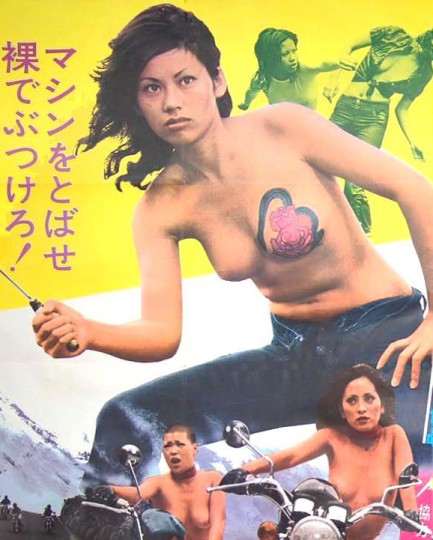 willing to toe the line, but her situation is quickly complicated when she makes a new pal played by Reiko Ike, who's disinclined to obey anybody, but particularly the local yakuza clan, one of whose higher ups is her big brother. willing to toe the line, but her situation is quickly complicated when she makes a new pal played by Reiko Ike, who's disinclined to obey anybody, but particularly the local yakuza clan, one of whose higher ups is her big brother.
Along the way to settling this mess you get fights, captures, torture, and nudity. Comedy and romance are part of the equation too, as is a bit of social commentary (a Red Helmet girl picking up gonorrhea from a priest is particularly biting). In the end a final throwdown is inevitable but how it turns out is anyone's guess. Nothing is guaranteed in a pinky violence movie—well, except violence.
Pinky violence movies can be fun, but the misses tend to be well wide of the mark, if not psychologically disturbing. Sukeban gerira is a nice example of the genre. It's wild, but never quite to the extent that it makes you want to run from the room. An excellent moment comes just a few minutes in, when Sugimoto aggressively bares a tattooed breast at a set of macho assholes, causing them to physically recoil. That sums up the best pinky violence: a new brand of feminine power that overcame any opposition set against it. Sukeban gerira premiered today in 1972.
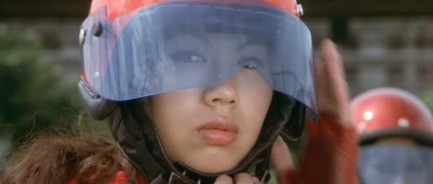 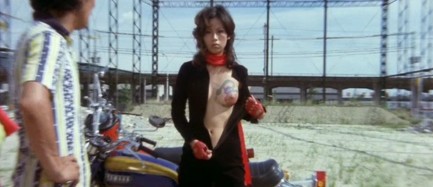 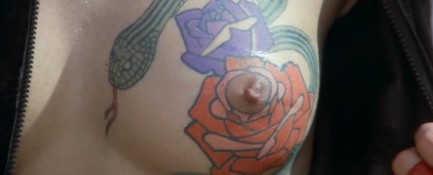 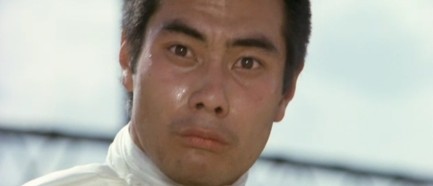 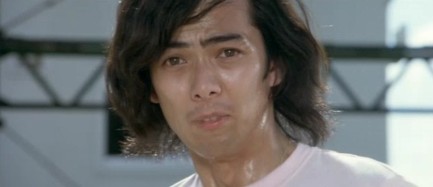 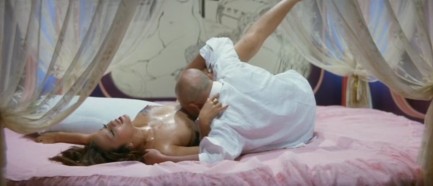 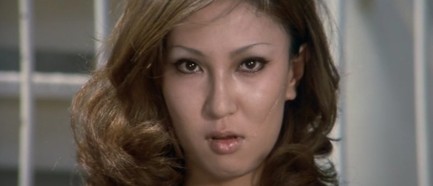 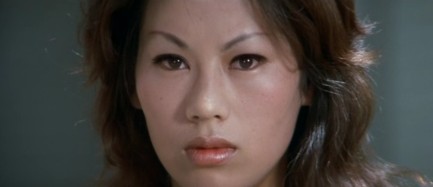 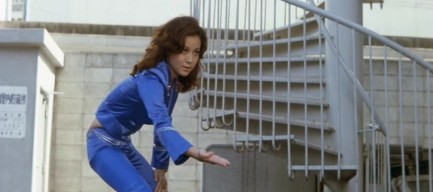 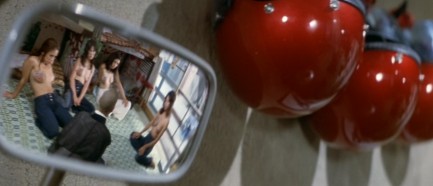 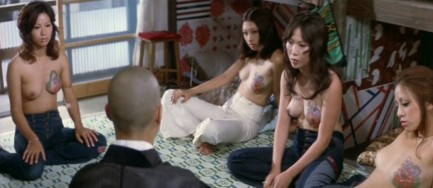 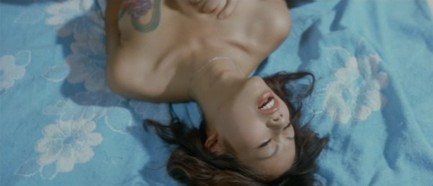 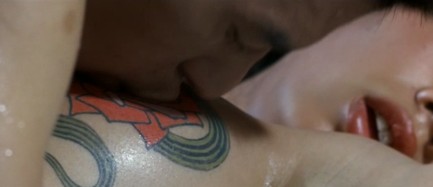 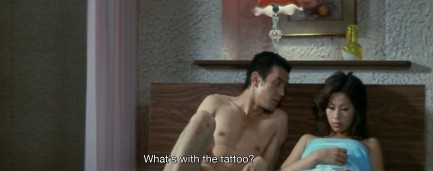 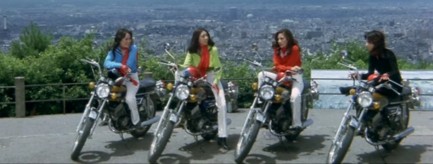 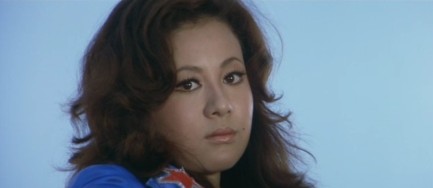 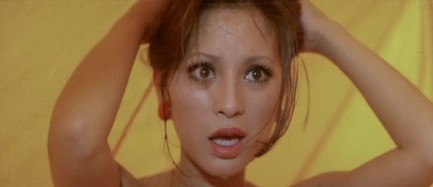 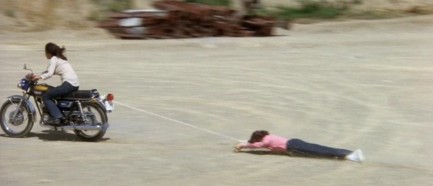 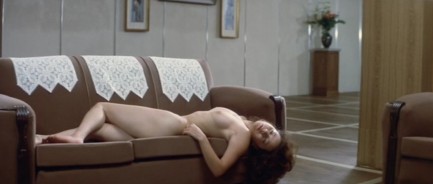 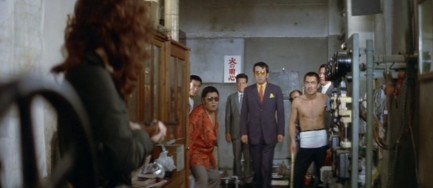 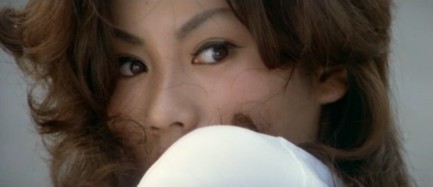
 Sometimes you have to do something to break up the monotony. 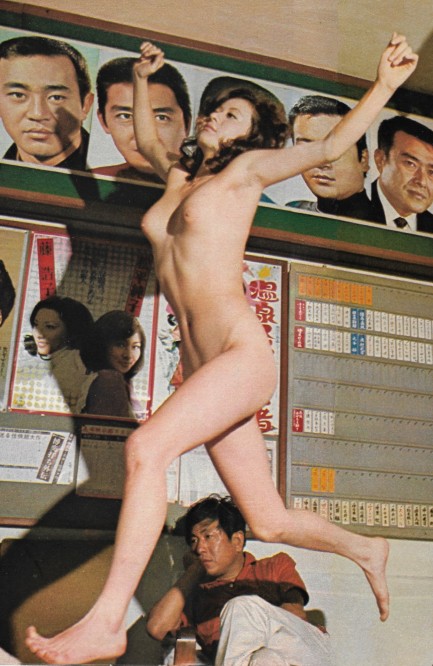
For those who don't know, streaking was the fad of running naked in front of surprised witnesses, whether on a street or in a mall or at a football game, and it was reaching its zenith around the time the above photo was made. So imagine you're sitting around your place bored as hell like the guy at bottom—who you didn't even notice until we just mentioned him—and Reiko Ike streaks across the room. That's the theme of this promo image from a 1972 issue of Heibon Punch, which had accompanying text telling readers Reiko suddenly ran free like an innocent child. We don't know about the “child” or “innocent” parts, but we heartily endorse the rest. She's streaked across our website more times than we can count, so feel free to search around for those images and find out a little more about one of the great action stars of her era.

|
 |

The headlines that mattered yesteryear.
2003—Hope Dies
Film legend Bob Hope dies of pneumonia two months after celebrating his 100th birthday. 1945—Churchill Given the Sack
In spite of admiring Winston Churchill as a great wartime leader, Britons elect
Clement Attlee the nation's new prime minister in a sweeping victory for the Labour Party over the Conservatives. 1952—Evita Peron Dies
Eva Duarte de Peron, aka Evita, wife of the president of the Argentine Republic, dies from cancer at age 33. Evita had brought the working classes into a position of political power never witnessed before, but was hated by the nation's powerful military class. She is lain to rest in Milan, Italy in a secret grave under a nun's name, but is eventually returned to Argentina for reburial beside her husband in 1974. 1943—Mussolini Calls It Quits
Italian dictator Benito Mussolini steps down as head of the armed forces and the government. It soon becomes clear that Il Duce did not relinquish power voluntarily, but was forced to resign after former Fascist colleagues turned against him. He is later installed by Germany as leader of the Italian Social Republic in the north of the country, but is killed by partisans in 1945.
|

|
|

It's easy. We have an uploader that makes it a snap. Use it to submit your art, text, header, and subhead. Your post can be funny, serious, or anything in between, as long as it's vintage pulp. You'll get a byline and experience the fleeting pride of free authorship. We'll edit your post for typos, but the rest is up to you. Click here to give us your best shot.

|
|





















 willing to toe the line, but her situation is quickly complicated when she makes a new pal played by Reiko Ike, who's disinclined to obey anybody, but particularly the local yakuza clan, one of whose higher ups is her big brother.
willing to toe the line, but her situation is quickly complicated when she makes a new pal played by Reiko Ike, who's disinclined to obey anybody, but particularly the local yakuza clan, one of whose higher ups is her big brother.























